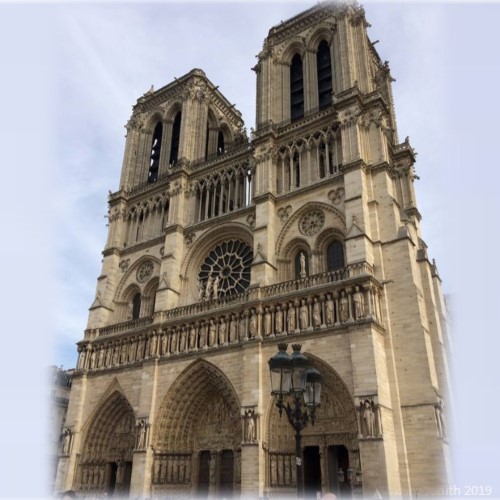~ By Sarah Levesque
When I got the news that Notre Dame was burning, I was at work. All my coworkers and I were aghast that such a treasure was burning. Thankfully, we soon got the update that all the Eucharist and all the art had been saved, and judging by the pictures of the inside afterward, there wasn’t all that much damage to the church proper. I rejoiced greatly at that news, especially because I had gone to see Notre Dame when I went to France on pilgrimage in 2017. Here I will share with you the pictures I have, though some are poor quality and I didn’t take nearly as many as I might have, or even as many as I thought I did. I didn’t take many notes, either, but hopefully there is enough between the pictures and notes to give you an idea of the grandeur of this Gothic Cathedral and the amazing art I got to see there. And if you got to see it with your own eyes, hopefully this will be a small reminder of your experience.
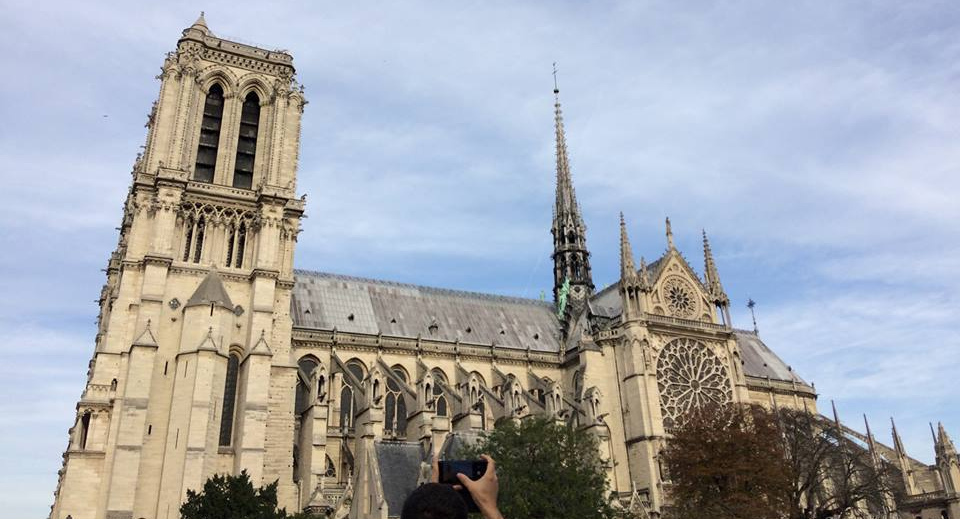
A little bit of background: Notre Dame de Paris (Our Lady of Paris) is built on a small island in the middle of the river Seine. The island has quite the religious history – it was the home of a Roman temple of Jupiter, and it was the capital of a Celtic area, and saw multiple Catholic churches built and destroyed before the lovely Gothic cathedral we know by sight was begun in 1163. If you look at the picture of the front of the church (top of the page), it looks symmetrical. However, it is not exactly symmetrical, because (I was told) God doesn’t always work in symmetry. You can see the difference in the arches of the side doorways – the archway on the left has an extra arch to it, much sharper than the archway on the right. There’s a closer look of these arches.
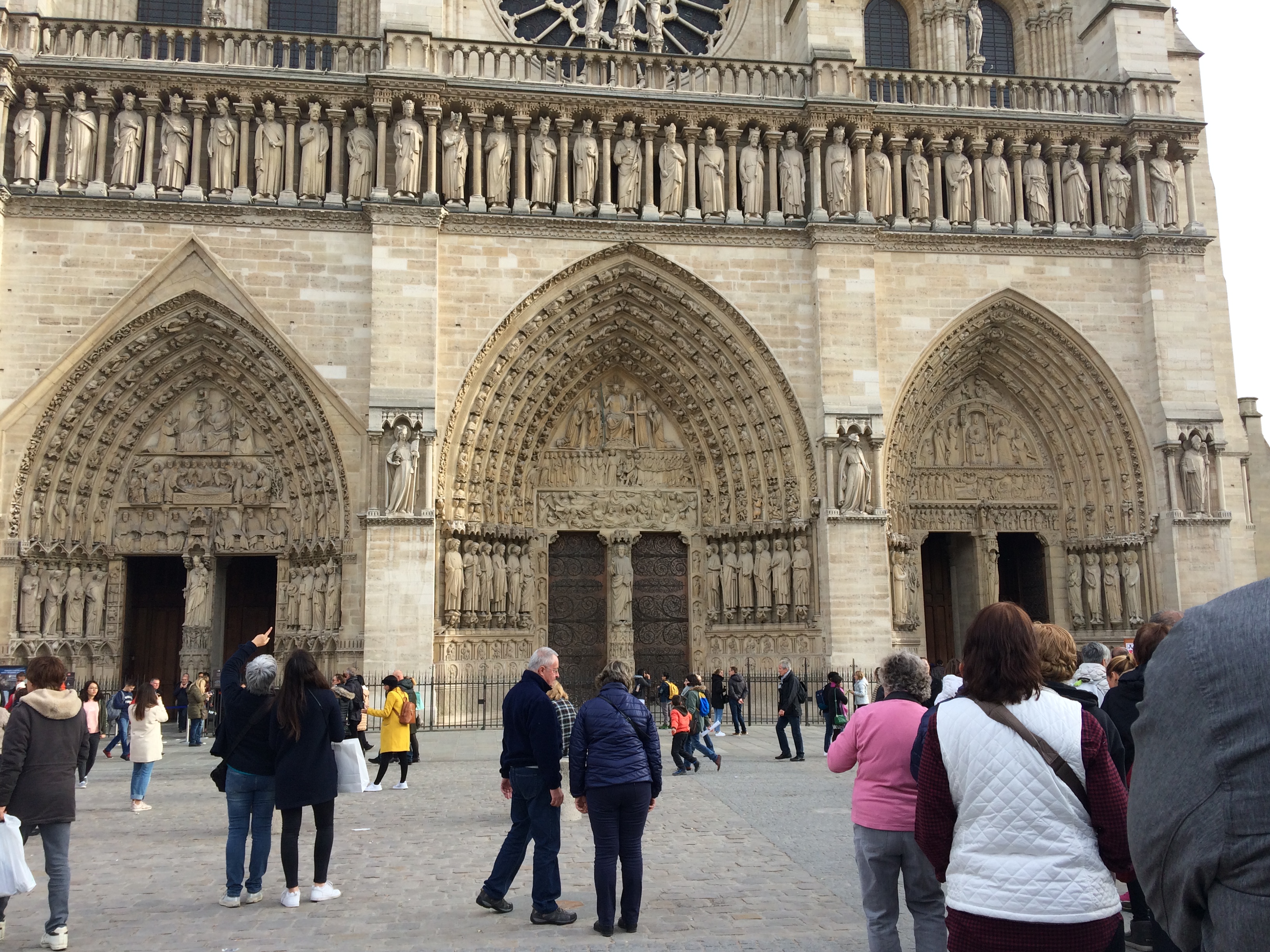
This picture shows more clearly the differences in the side archways. You can also see just how small the people are compared to the archways. Each archway has its own scene in the center, surrounded by angels, saints, and devils. The picture below is from the center archway and shows Christ in judgement on the Heavenly throne. Below him is an angel and saints adoring Christ, and two devils, leading people away from Christ.
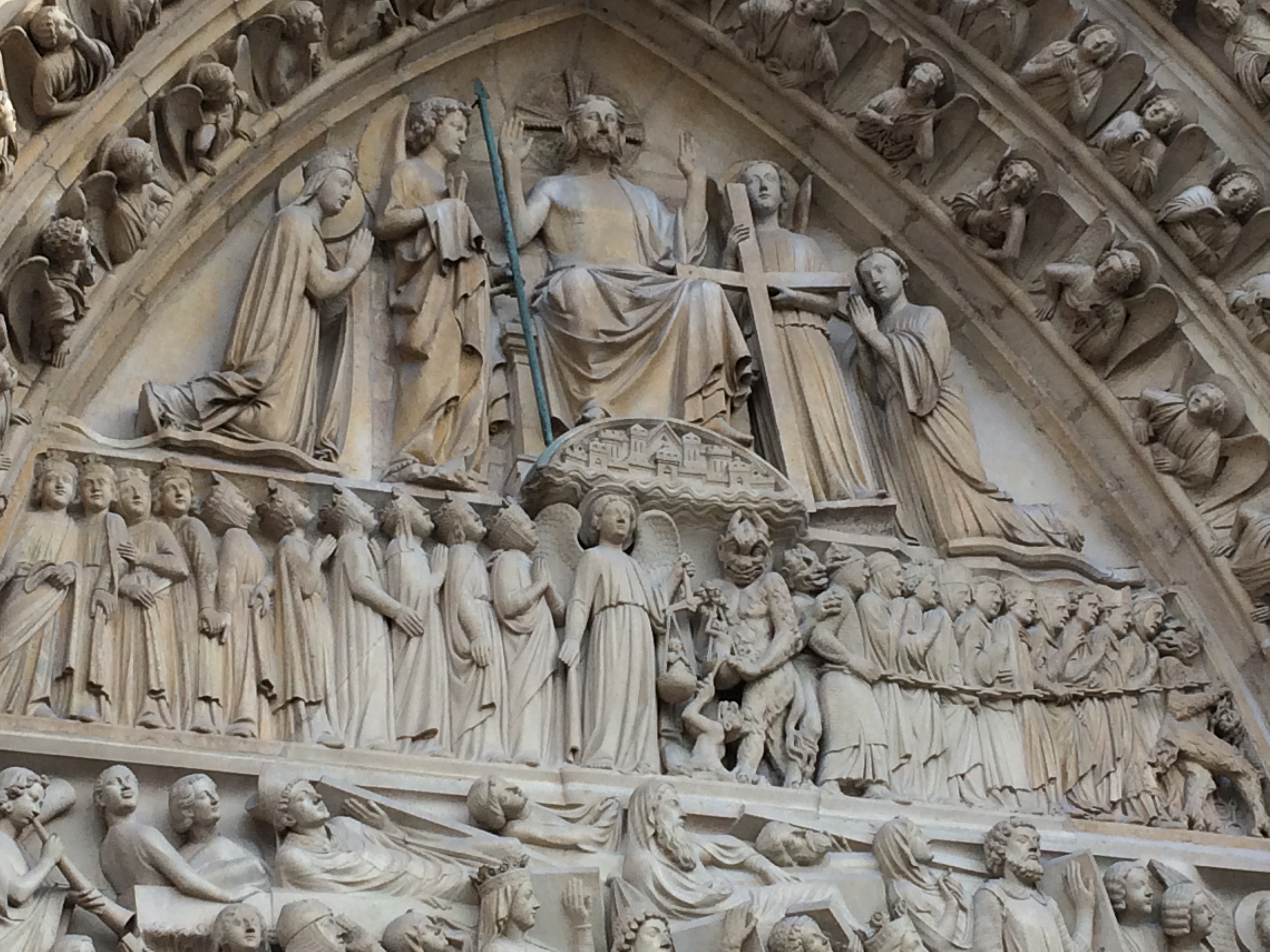
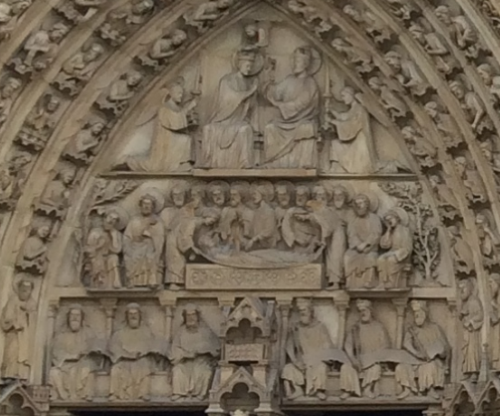
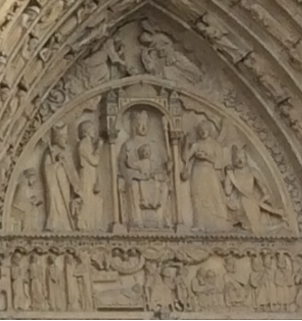
The left picture above comes from the left archway, and shows the Coronation
of Mary as Queen of Heaven. The right picture is of the right archway, and shows Mary and the Christ Child. There are other scenes in the archways, but I don’t have good pictures of them. The statues are in the Romanesque style, probably a holdover from an earlier church. As you can see in the top picture, there are statues above the arches. These are the Kings of Judah, and were originally added – brightly painted – in the 13th century. Interestingly, during the French Revolution, they were mistaken for the kings of France, and they were removed and their heads were chopped off by revolutionaries. They were replaced in the 19th century.
Now let’s move to the nave of the cathedral, the main part of the church.
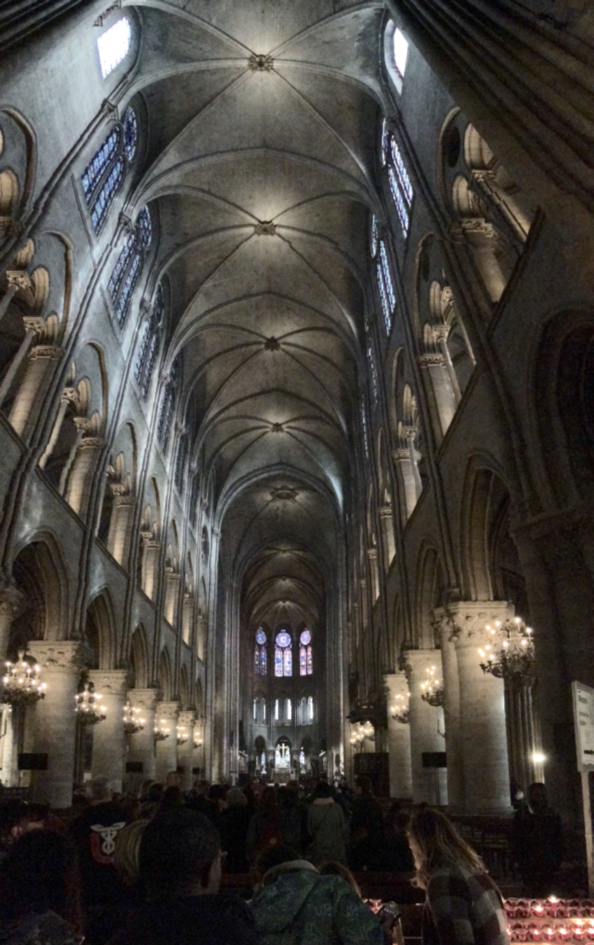
The ceiling is breathtakingly high, with stained glass windows set high in the walls. These windows let in a lot of light, which is augmented by the chandeliers closer to head-level. On either side of the nave is a section like a hallway, connecting the nave to the side chapels.
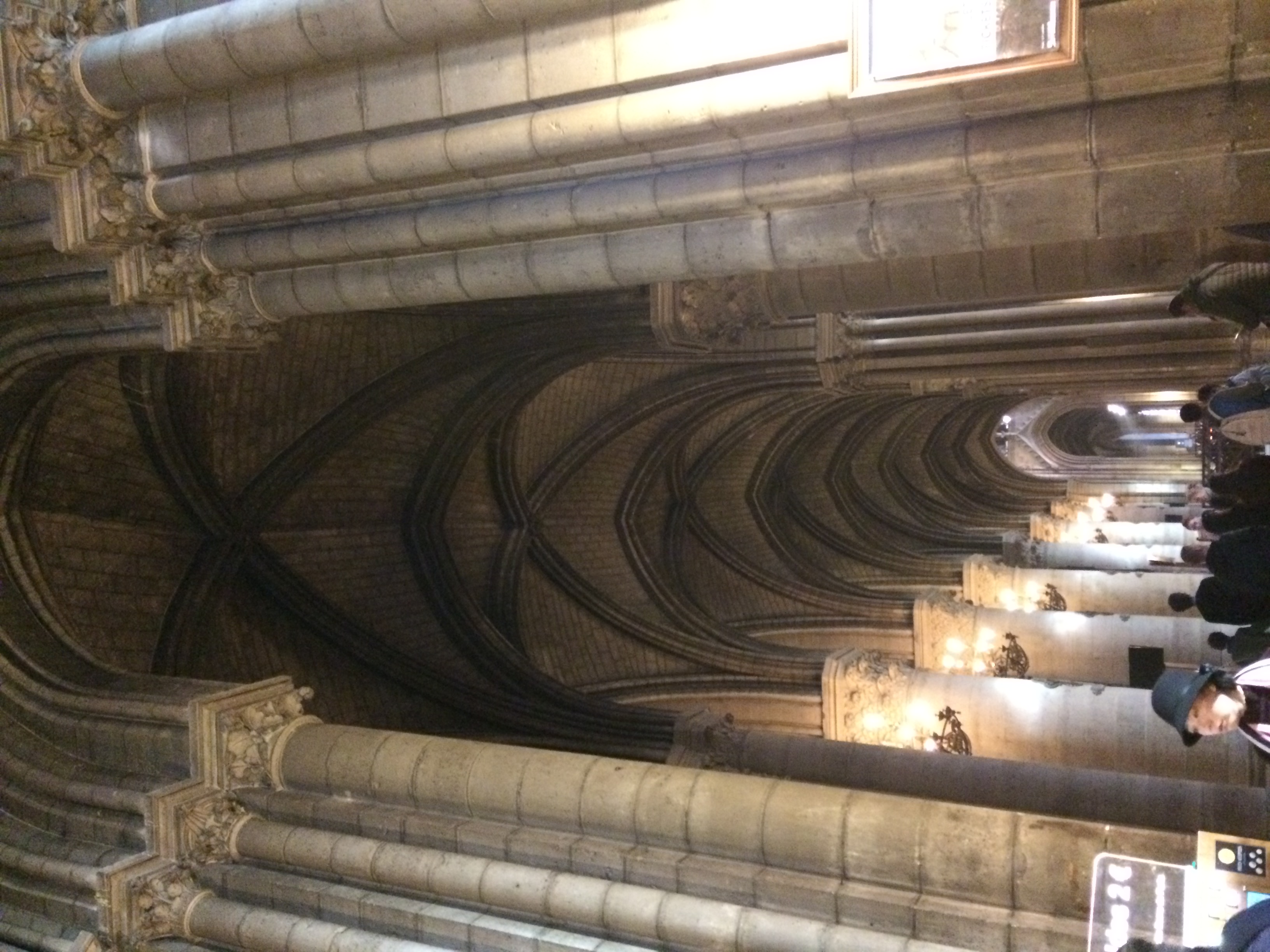
There are an astounding 27 chapels surrounding the nave. Each of these chapels is unique in the saint it is dedicated to and how it is decorated. Some are simple, others lavish. Each of the chapels faced the same direction as the main church, and each had a set of stained glass windows taking up the majority of the outside wall. When I was there, most of the chapels were not used as working chapels, but mostly for places to pray near the artwork (as Catholics, we don’t pray to artwork any more than we talk to a phone. Each is a tool for communication). A couple of the chapels were being used simply as storage spaces, and if I remember correctly one or two might have been in renovation. I only have pictures of a few of the chapels and, unfortunately, I didn’t mark down which chapels I took pictures of.
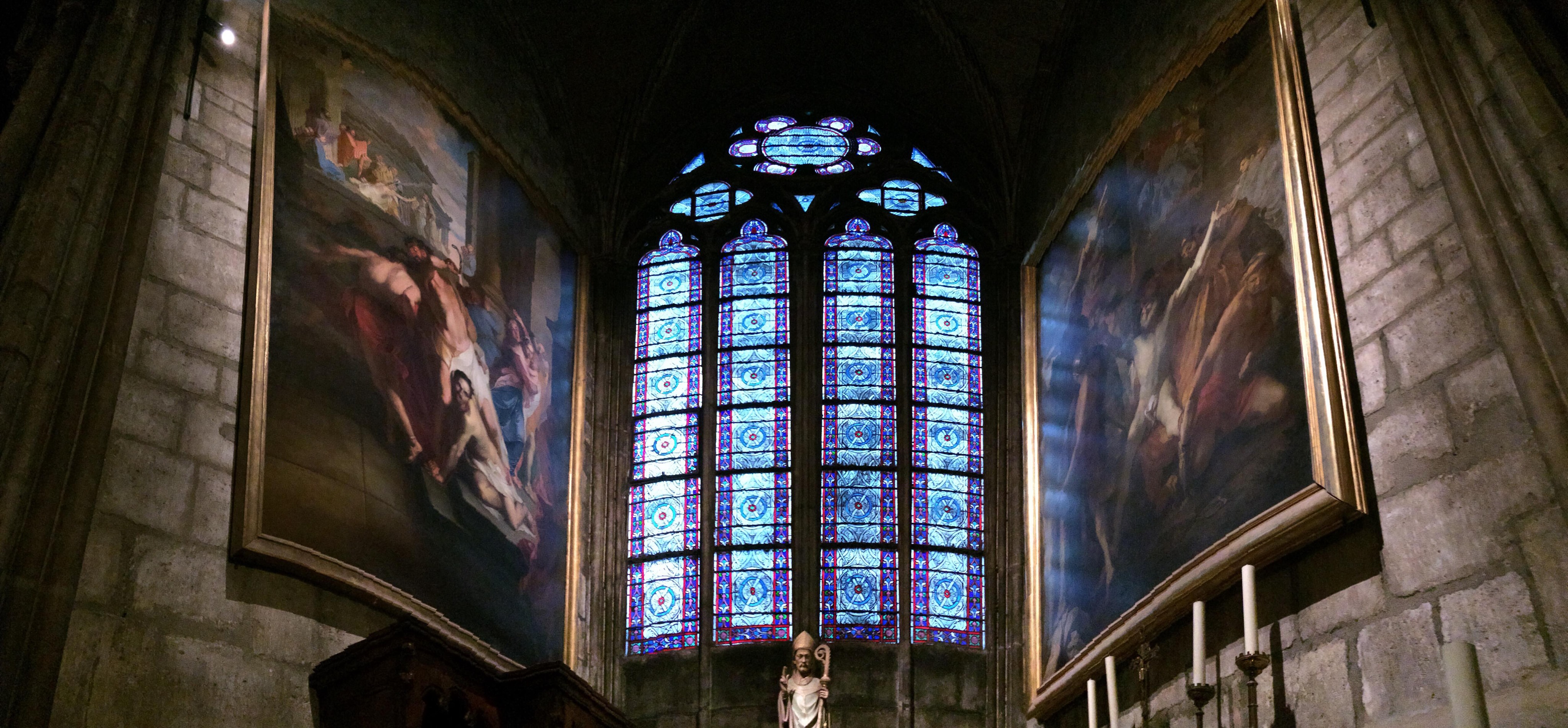
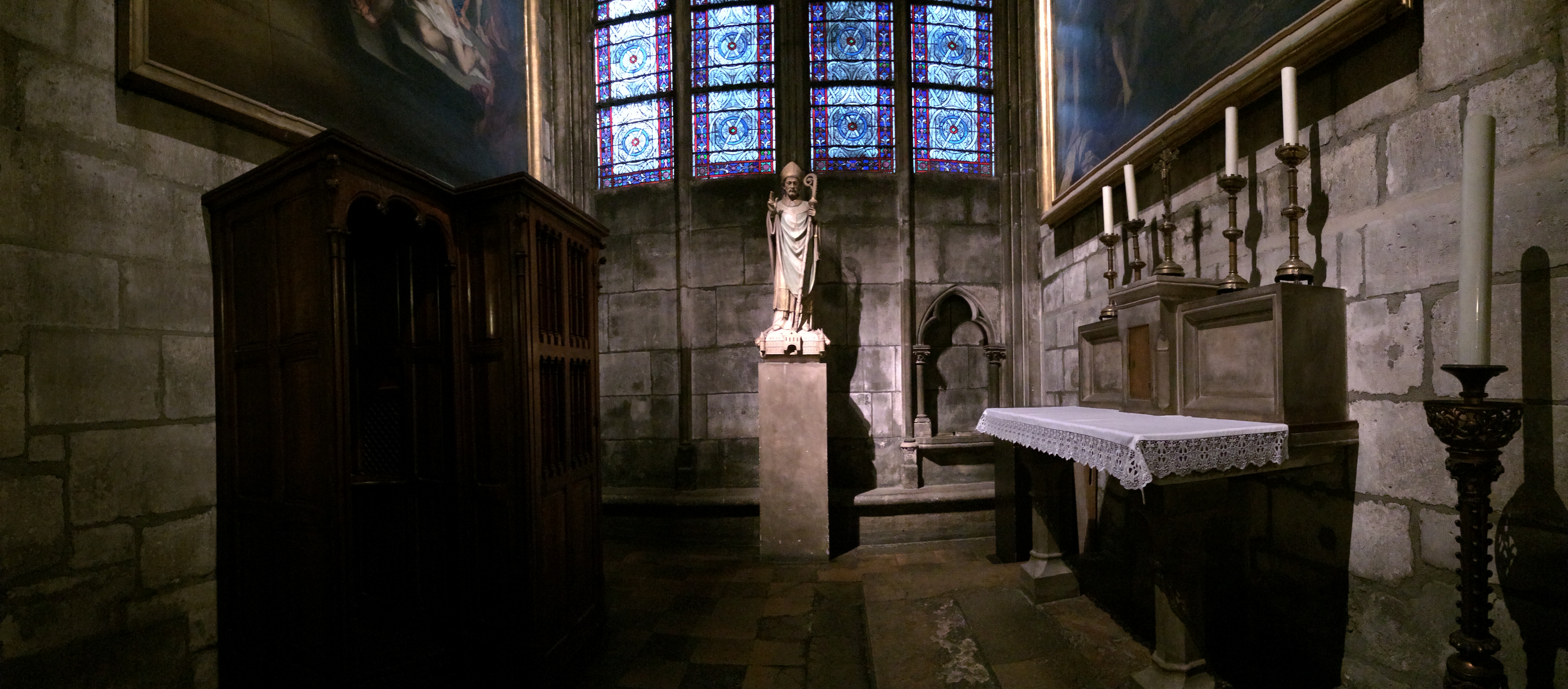
The chapel above is a model of what many looked like. To the right you can see a simple altar (in the old Latin style) with a tabernacle and candlesticks (unlit to denote that the tabernacle is empty). There is a statue of a saint centered under the windows, and a confessional to the left. What made this chapel noteworthy for me was the artwork. These are two best pictures I have, and should give you an idea of just how big each painting was, each covering just about the entire wall it was on. The figures in them were larger-than-life, and the detail was impeccable.
The next few are pictures from the Chapel of Saint Denis (luckily I took a picture of the sign!).
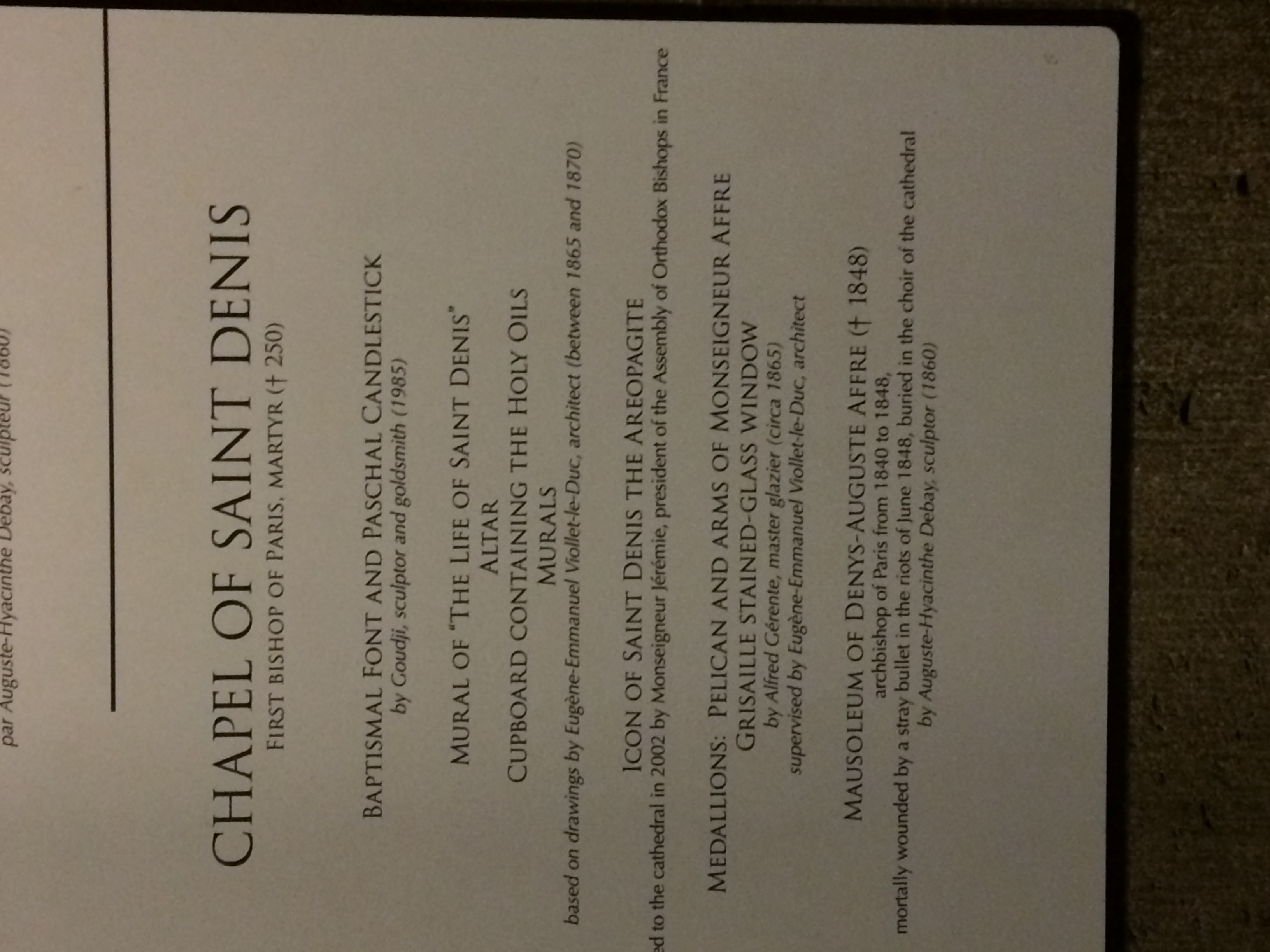
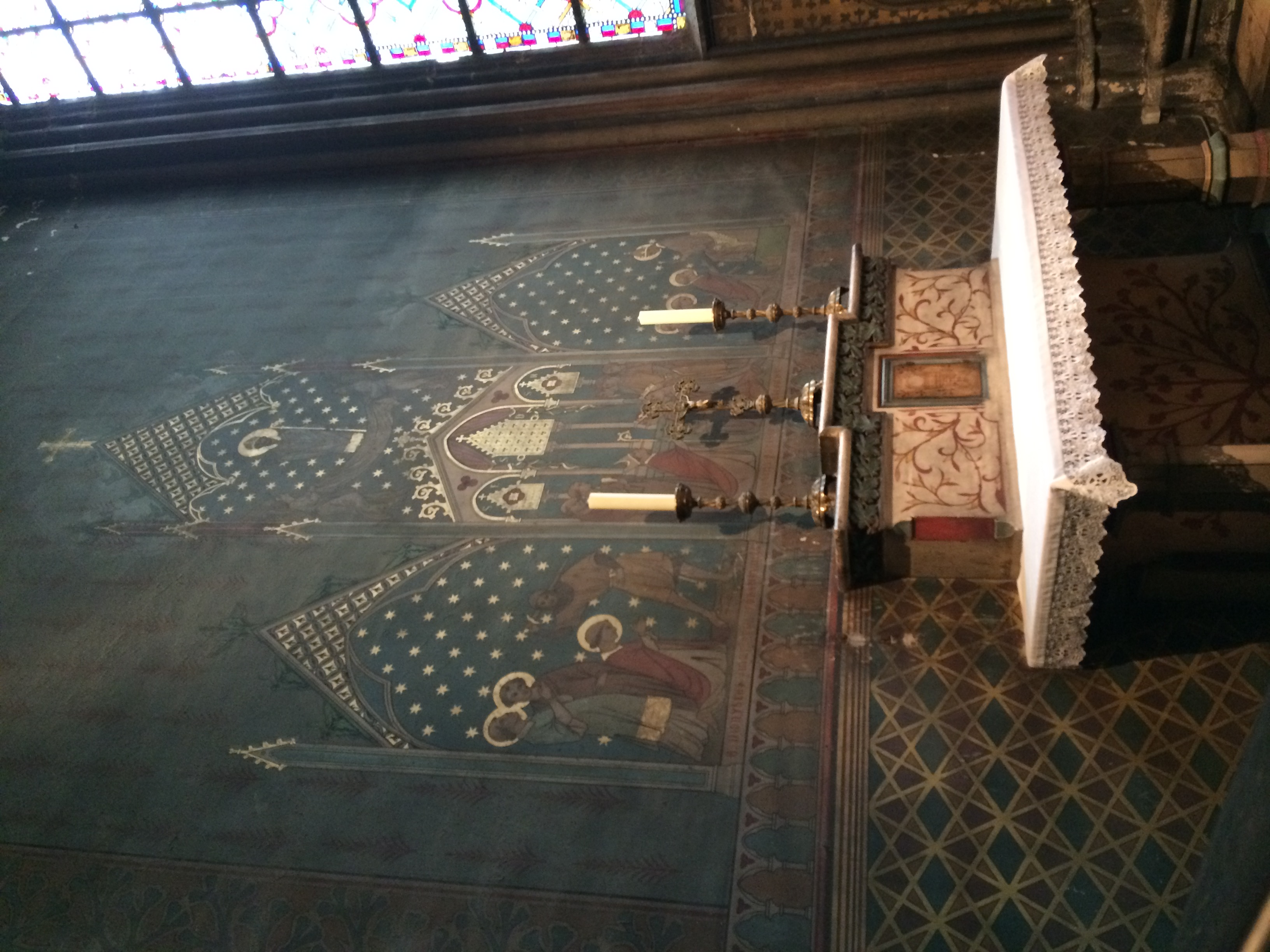
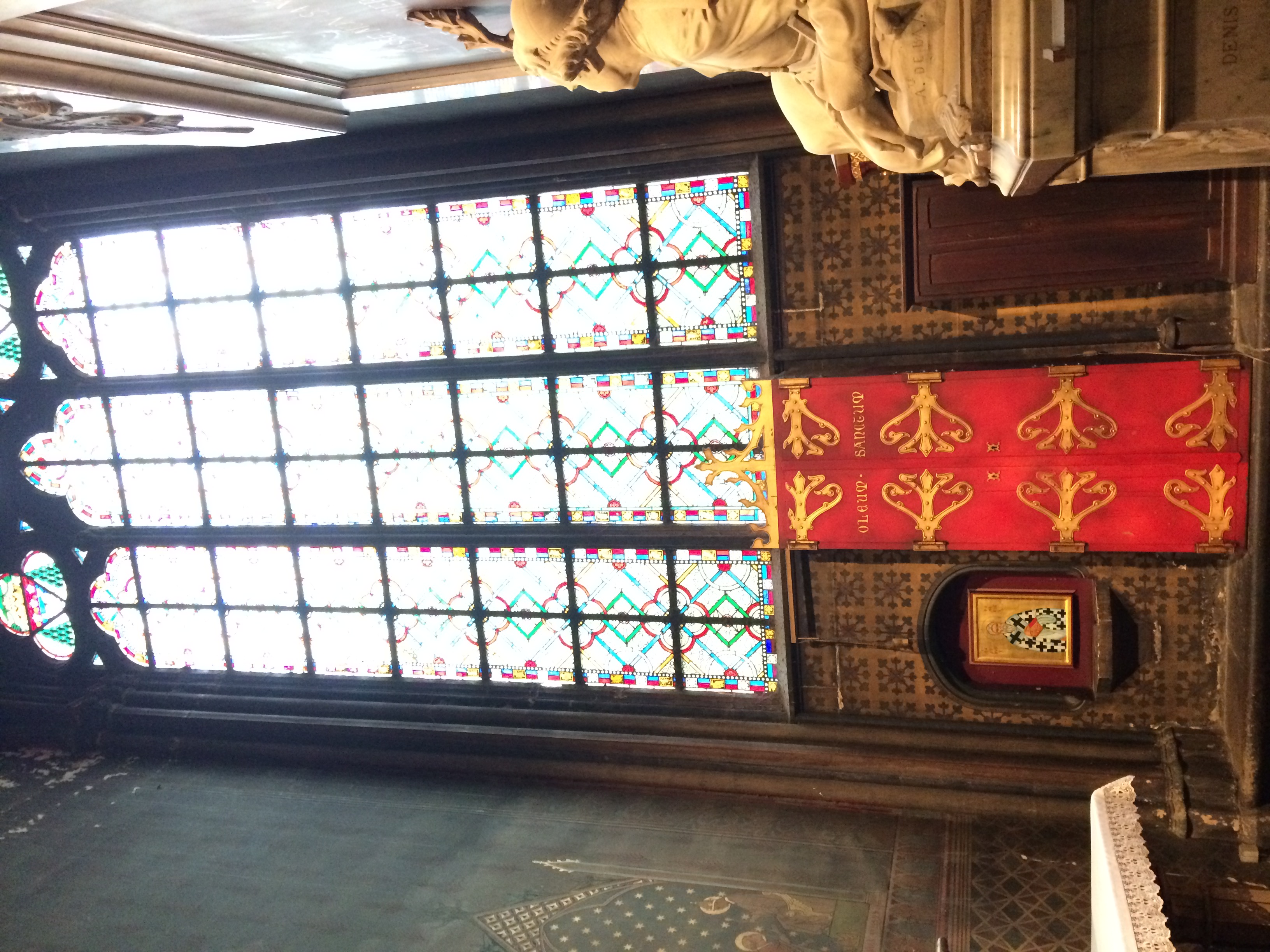
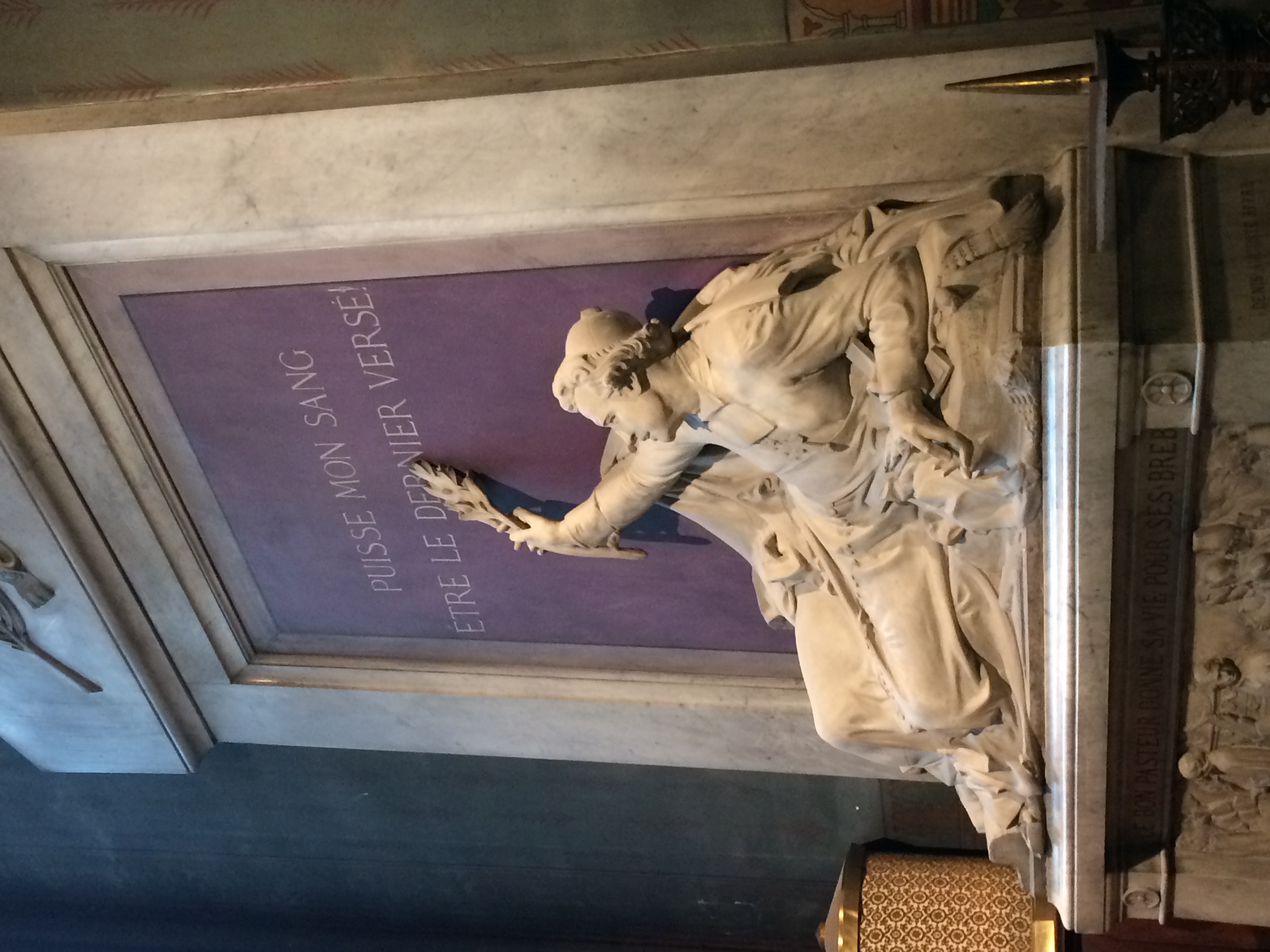
The altar was on the left, with a beautiful and intricate painting on the wall behind it. Again, the candles were unlit to signify that the tabernacle was empty. You can see the set of stained glass windows covering most of the outside wall – this time with more red and white than blue – with what I believe is a cabinet below, decorated in red. And on the right was a statue of St. Denis, Archbishop of Paris, who was killed in the French Revolution of 1848. The sentence above him, translated, reads “May my blood be the last that is shed.”
I suspect the chapel in the next picture was used for storage, as there are multiple different statues and the painted walls – once brightly colored, now faded – are blocked by other artwork. The dark statue is St. Anthony of Padua.

Another chapel is next, this one with a kneeler set up in front of a depiction of the crucifixion. To the left was a picture of the Virgin and Child. Both were adorned with flowers. This was an unusual set up, as most of the chapels were focused more on the altar – the place of the Eternal Sacrifice of the Mass – than on a piece of artwork.
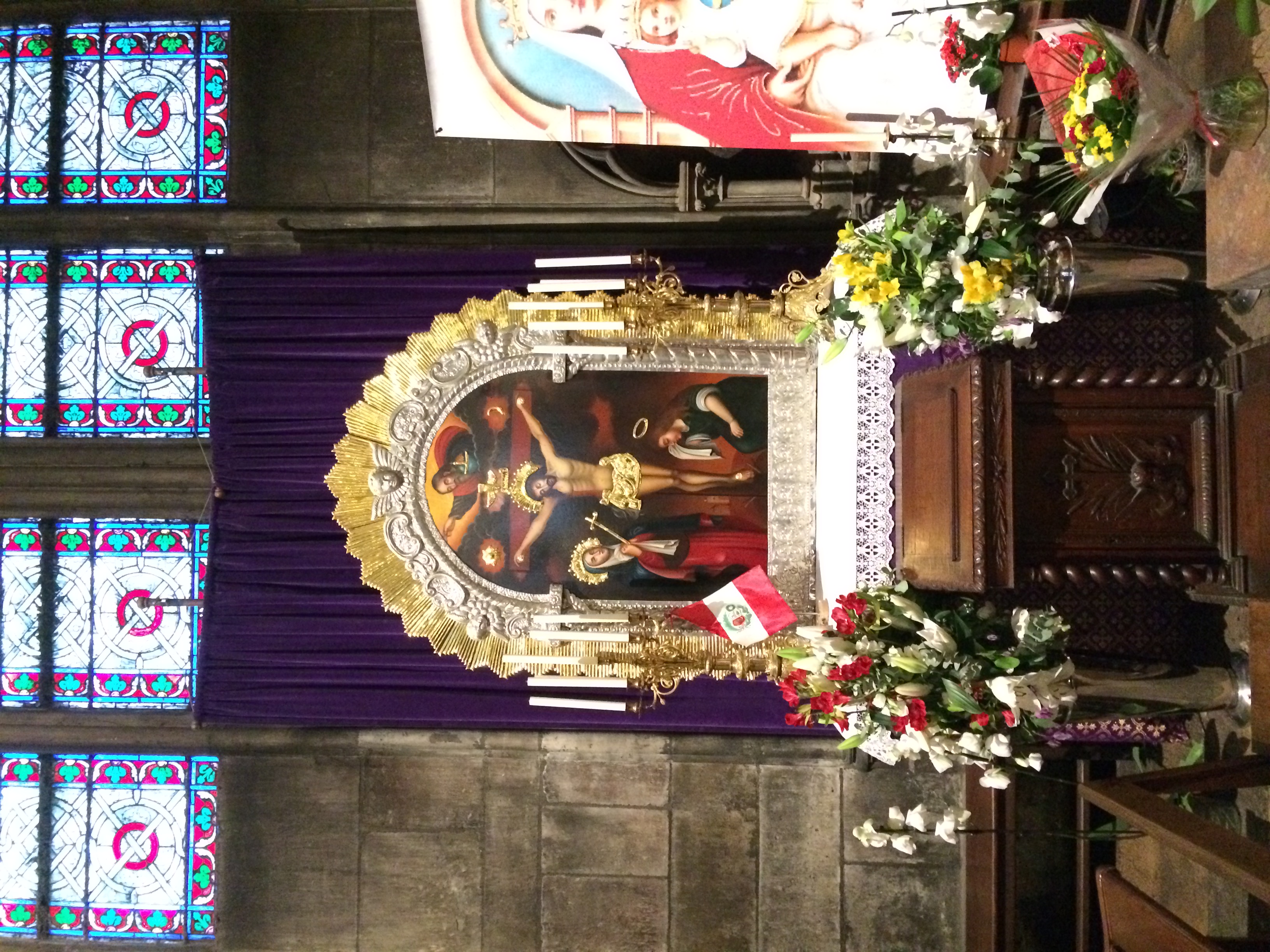
Below we see the main altar, with people praying in the wooden chairs in the nave. Sadly I don’t seem to have any pictures of the altar from any closer than this.
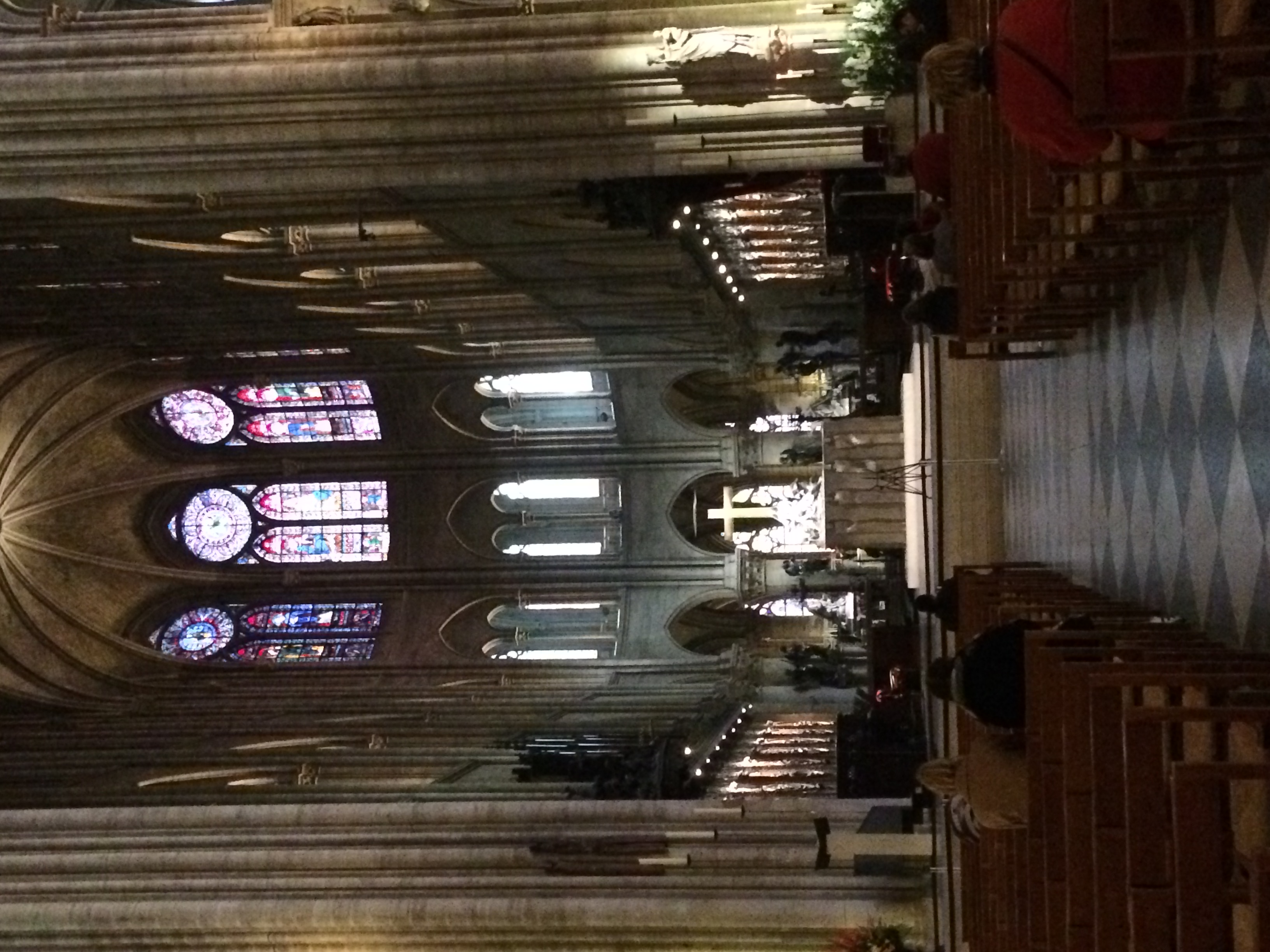
Around the altar, separating it from more corridor and more chapels, is a wall known as a “rood screen”. Many rood screens are latticework, but Notre Dame de Paris sports a wall which, like the rest of the cathedral, is highly decorated. Marching along the outside of the rood screen are statues depicting scenes from the Bible. These very detailed both in how they were carved and how they were painted. The first picture is a length of the screen; the second is a close-up of two scenes.
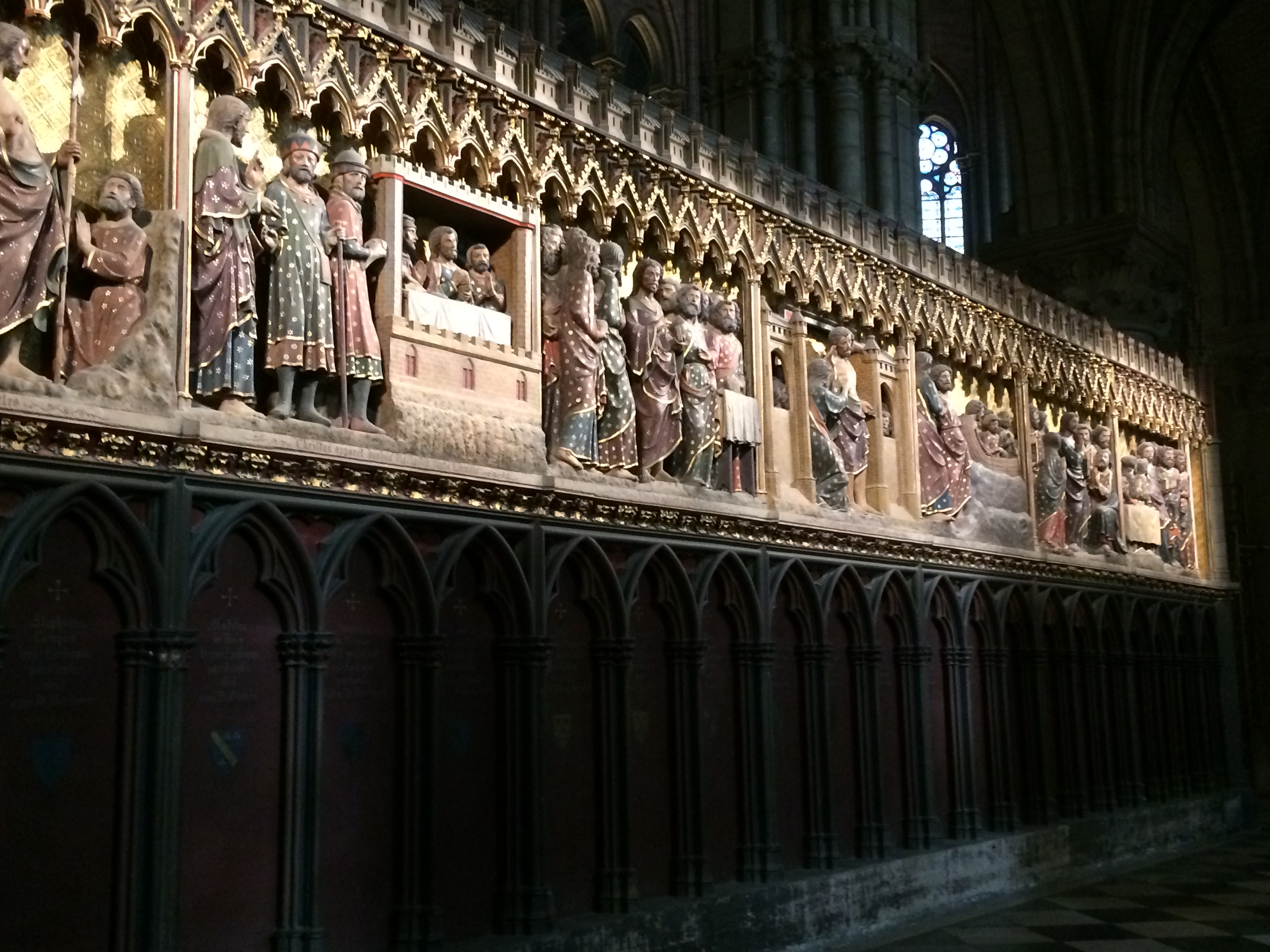
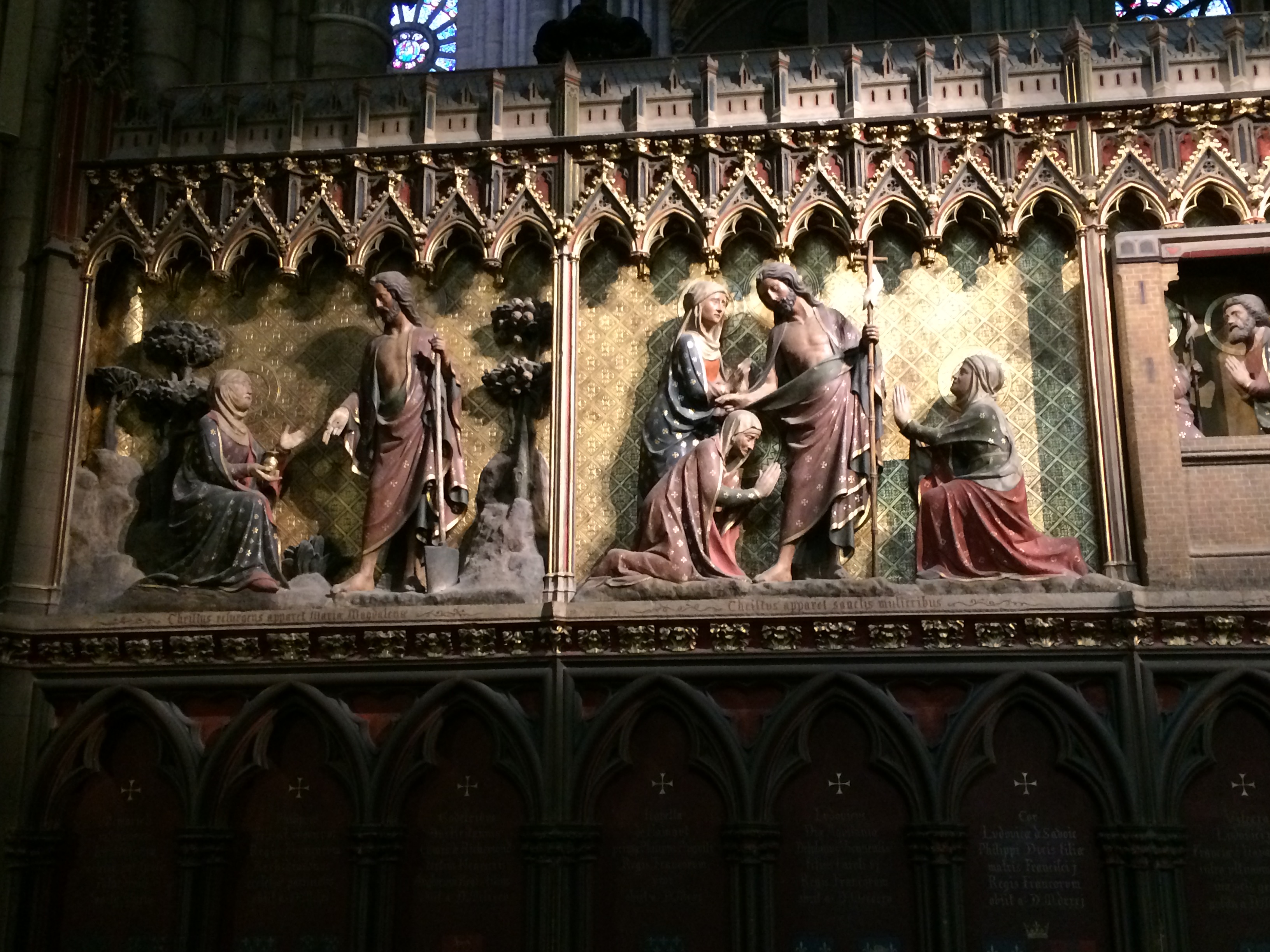
And of course we can’t talk about Notre Dame without mentioning the Rose Windows. Each section of this window has its own scene in it. The windows immediately below this Rose Window depict the saints.
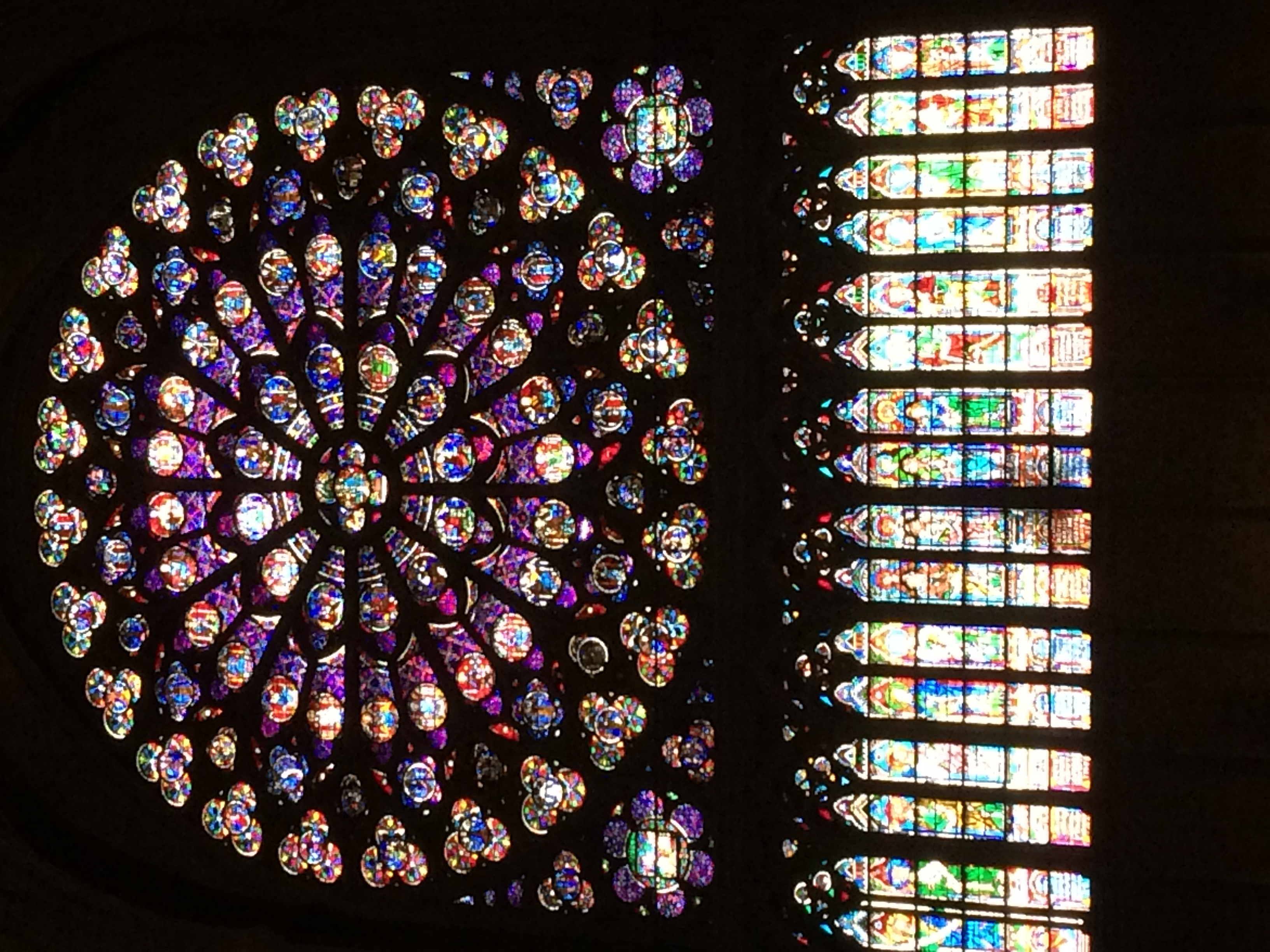
I hope that someday you get the chance to see Notre Dame de Paris, as I have only given you a tiny glimpse of the enormity and majesty of this grand cathedral. To learn more from the privacy of your own home, I suggest these two web pages:
frenchmoments.eu/notre-dame-de-paris/
frenchmoments.eu/west-facade-of-notre-dame-cathedral-paris/
All images credited to the author
